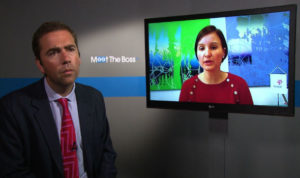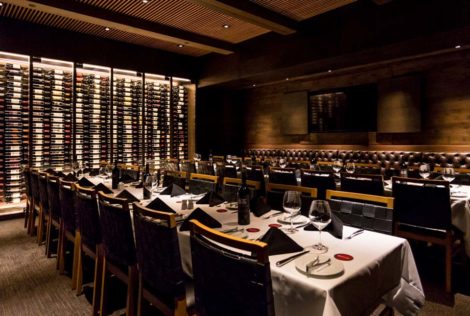

Consumerization: How To Makeover Entrenched IT
It’s 2012 and the world of the touchscreen is well and truly upon us. We’re already talking about the second screen experience; augmented reality is starting to make waves – and lest we forget that the iPhone 5 has just reared its slightly larger head.
Bolt on the continuing global rollout of 4G networks and add a few patent lawsuits (yawn) into the mix, and you’ve got yourself a technological field that refuses to stop evolving at breakneck speed.
This is consumerland, where fanboys reign and tech-heads explore. But while it continues to spin on like a renegade catherine wheel, its slightly more mature corporate cousin is only just starting to play catch up.
From enterprise mobility to BYOD, CIOs are finding ways to incorporate their employees’ mobile wants into their deeply entrenched IT infrastructures. But what about the structures themselves; how do they get a touch of consumerization?

On hand to answer, in the second of this week’s interviews, is Statoil’s CIO, Sonja Chirico Indrebo. As the world’s largest offshore oil operator, Statoil has a vast number of rigs strategically placed around the globe, drilling kilometres on a daily basis. Her secret to benefitting from the game-changing pace of consumerization? Pick business-enabling projects, stay nimble, and everywhere you can – go mobile.
Below are her three key takeaways for executives looking to leverage their IT operations with heightened consumerization. For the full interview and to find out how Sonja’s using the cloud to help Statoil reign, click here.
Be Dexterous: Look For The Opportunities
“We looked for business opportunities before using our IT competence to translate that into faster deliveries,” explains Sonja. One area she identified early on was the lack of security in how Stratoil was distributing its meeting documents. It was typical for the majority of employees – or their assistants – to print off documents prior to a meeting. The problem: human memory. It happens to the best of us, and from time to time, Stratoil’s documents would end up being left in places they shouldn’t – especially on planes.
“We introduced the possibility of using iPads that we introduced internally, then encrypting them. They’re secure but readily available. You can use them on a plane and make annotations – so that was the business value. It’s creating something for our users that makes their lives easier, while also adding more security than the previous solution.” Which brings us nicely on to Sonja’s second takeaway…
Lock And Load: Control Your Security
We hear it time and time again, but with the continued emergence of the cloud and mobile technologies across the board, it’s paramount to identify that the person logging onto your system is, well, that person. For Sonja and Stratoil, as with a lot of companies, this means layering security structures.
“Typically, what we’ve tended to do is control the device to we could have a layer of security within it, and then of course we’ve kept in the usual layers of passwords and so forth. But having a secure way within the technology to identify people and make sure that it’s the right person who has access is still a technology problem.”
To overcome those barriers, Sonja and her team segregate the solution to ensure that they have internal control, looking at what is business critical and what information needs to be protected as a priority. The rest? “It might not be as problematic is it’s not 100 percent controlled, but it’s providing those layers that matters,” she explains. “In some cases you allow something and it other cases you don’t, but it’s all down to how much control you have.”
Link Your IT Costs To Your Processes
“What we’ve done from an early age is to not look at IT as purely cost, but linked it to our processes,” continues Sonja. “The importance here is to have both. We need to understand where the requirements are coming from that are generating this need so that we can prioritise across.”
It’s an undeniable truth that opening up in such a way will have repercussions for further external costs, but the underlying fact is that other departments don’t want to become IT professionals. They just want the support while they focus on their core activities. To bring this to life, Statoil leverages apps as a core part of their consumerization efforts.
“The great thing about apps is that people understand them relatively easily. You don’t have to have a big training program to understand how you should use an app that is essentially performing a simple action.
“It’s very much about making sure that you have the competence in translating what the business is trying to achieve with the right tools and make it as integrated and efficient as possible; having solutions that talk to each other makes it easier to transform the business. We have the opportunity in IT to disguise the complexity that comes from the possibilities of technology, but that’s where we see the most value is added.”
It’s here that Sonja’s point comes into its own. Writing on her blog, she asks: “being Chief Information Officer for Statoil, I often ask myself if what we do in IT helps simplify employees’ work lives, or am I just adding to the complexity?”
This is a question that every CIO should be asking – especially when it comes to introducing your IT operations to the arena of consumerization.


